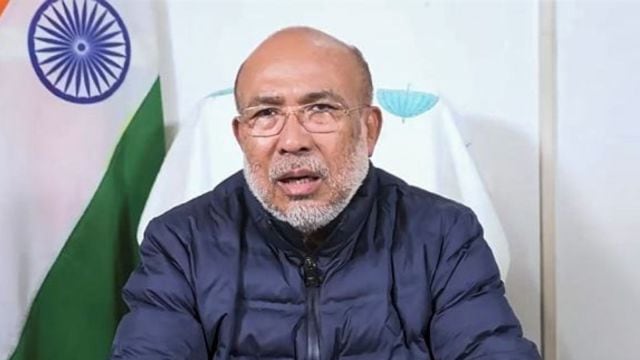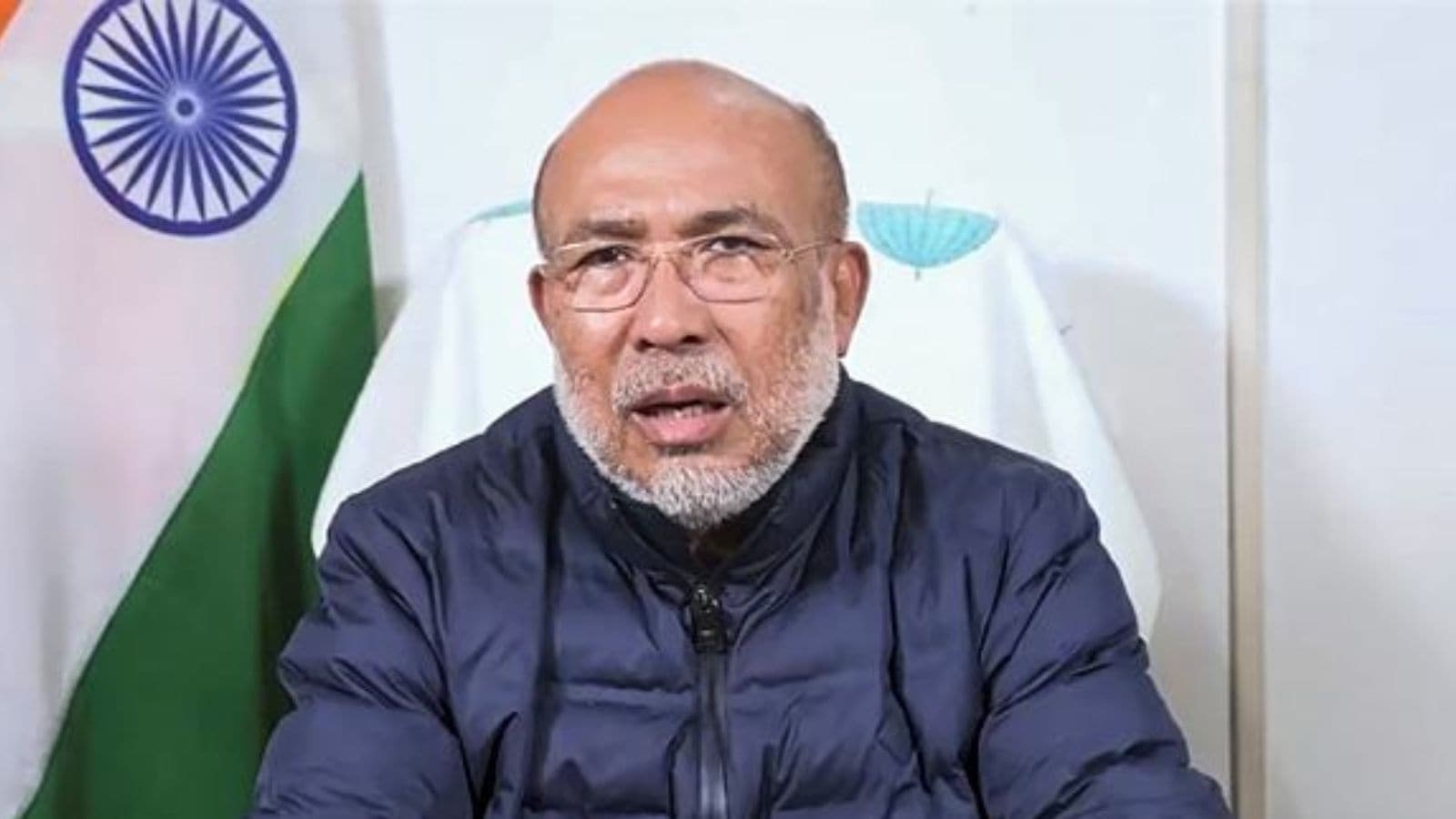

New DelhiFeb 10, 2025 13:06 IST First published on: Feb 10, 2025 at 13:06 IST
In what appears as the only honourable option left to avoid an inglorious exit and a loss of face to the BJP, Biren Singh resigned as the Chief Minister of Manipur on February 9. Unlike the staged resignation-reversal drama of June 30, 2023, when Singh could divert the national media’s attention to Rahul Gandhi’s visit to the state, the Governor’s prompt acceptance of Singh’s resignation this time around demonstrates the hollowing out of his populist politics and the BJP’s national leadership’s acceptance of his political liability. Faced with an open revolt from a considerable number of members within the BJP in the valley areas, and the withdrawal of support by the National People’s Party (which has seven MLAs) in November 2024, Biren Singh and the BJP could not afford to face an imminent no-confidence motion in the upcoming eighth session of the Assembly which was scheduled for February 10 (now uncertain).
Singh’s resignation marks both the unravelling and culmination of the tensions inherent in his populist politics and leadership style. In his overweening ambition to reinvent his political image and project himself as a pabung (father)-like figure in the eyes of Meitei ultranationalists, Singh had initially used his political skills to co-opt pliable hill tribal leaders to overcome his fragile position during his first term in office (2017-2022). Despite the comfortable majority the BJP won in the 2022 assembly election, he faced formidable rival power centres within the BJP led by Biswajit Singh and Konthoujam Govindas. To consolidate his leadership and offset rival political challenges, he embarked on an aggressive populist drive to rejuvenate Meitei indigenous politics centred around the revival of Sanamahism. Given that the BJP — and for that matter the Sangh Parivar — has always seen indigenous cultures as pliable for Hindutva appropriation, this revivalism was never considered a threat to the Sangh’s cultural agenda or the BJP’s electoral interest in the state.
Story continues below this ad
However, the large-scale mobilisation of the Meitei youth around this politics and using two frontal social and cultural organisations, namely, the Meitei Leepun and Arambai Tenggol, during Singh’s tenure as Chief Minister had radicalised many and reactivated an insurgent space. The appropriation of this space by proscribed armed militant groups, including the United National Liberation Front (UNLF) and the Kangleipak Communist Party (KCP), became evident as these frontal organisations either turned into their proxy foot soldiers or their activities and agenda overlapped.
The dangerous portent this held for the legitimacy of the Indian state became evident in January last year at the Kangla Fort when 38 elected Meitei representatives were reportedly asked by Arambai Tenggol, under duress and against their constitutional oaths, to commit themselves to aggressively push an ultranationalist Meitei agenda at the expense of the Kuki community’s interests. The BJP grudgingly realised the dangerous gamble of such a localised populist politics — such an event could be used to revive the glorious indigenous past of a sovereign Kangleipak in ways that bolster the secessionist agenda of the valley-based proscribed armed groups.
This, and the leaked tape where Singh allegedly claimed to have played a central role in perpetuating the violence in the state, have seriously dented his image. The Supreme Court’s admission of a petition in early November 2024 and its direction on February 3 to the Central Forensic Science Laboratory, Hyderabad to furnish its report in a sealed cover by mid-March, put Singh under an unenviable public spotlight. Despite concerted efforts by the Centre and the state to question the credibility of this tape, a damning report by Truth Labs, a private forensic firm based in Hyderabad, which confirmed a 93 per cent similarity of Biren Singh’s YouTube voice samples and his alleged leaked tape, made his position increasingly untenable and indefensible.
Story continues below this ad
What made matters worse for Singh is the growing public disenchantment with his leadership. That his populist image as a “pabung” and his self-professed claim to be the chief protector of the Meiteis has been severely dented became apparent two days before his resignation when thousands of Meira Paibis reportedly staged demonstrations in Imphal demanding that he quit. The Meira Paibis and powerful social forces in the valley areas are increasingly disappointed with Singh’s inability to shield the “village volunteers” in the valley areas — a euphemism for a congeries of trained armed youth groups, including proscribed armed groups — from police arrests and criminal prosecution by central agencies, including the NIA and the CBI. The large-scale mobilisation of the youth as village volunteer forces across the divide has radicalised them and has incentivised the return of militancy in the state to unprecedented levels.
Despite armed mobilisations and massive deployment of the Centre’s paramilitary forces in the state, law and order continue to remain precarious. This became evident a night before Singh’s resignation when “unidentified gunmen” looted six SLRs, three AK-47 rifles, 270 rounds of live ammunition and twelve magazines from an armoury of the Indian Reserve Battalion’s outpost in Thoubal district. As exhaustion sets in across the divide after 21 months of violence, there is an increasing demand to fix political responsibility and accountability in the government.
most read
What is also interesting about Singh’s resignation is that it showcases the transformation of factional politics within the BJP in Manipur. As the viral resignation group photo demonstrates, it is evident that Biren Singh has succeeded in taming and co-opting two formidable rival power centres represented by Biswajit Singh and Konthoujam Govindas. The arrival of a new rival power centre represented by Y Khemchand, Satyabrata Singh, and Thokchom Radheshyam Singh may give a new window of opportunity to the BJP. It is not immediately clear if this rival power centre will present a viable and stable alternative to Biren Singh’s leadership.
Although the BJP has avoided President’s rule in the state, the heighted radicalisation of the insurgent space and extreme polarisation in Manipur may impel a shifting of political gear if the party is seriously committed to restoring trust in the Indian state and its institutions. This is imperative, as an alternative political arrangement by instituting a moderate leadership which caves to an ultranationalist Meitei agenda or concedes to a separate administration as demanded by the Kuki-Zomi-Hmar groups, is likely to receive popular backlash from both sides of the divide. The big question is: Can the BJP use the opportunity offered by Singh’s resignation to set aside its short-term electoral interests and prioritise restoring normalcy to Manipur? The jury is still out.
The writer is Professor and formerly Head, Department of Political Science, University of Hyderabad, Hyderabad. He is also a Senior Fellow, Centre for Multilevel Federalism, Institute of Social Sciences, New Delhi


